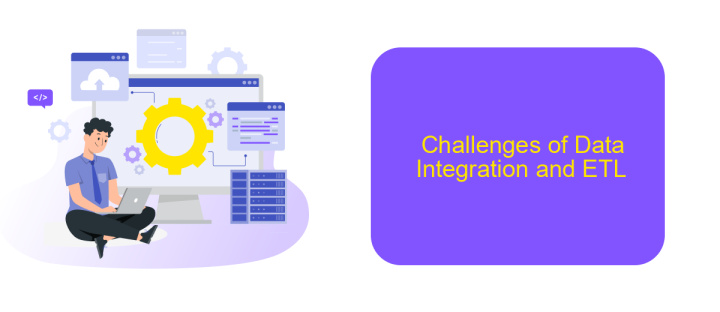Difference Between Data Integration and ETL
Data integration and ETL (Extract, Transform, Load) are essential concepts in the realm of data management. While both aim to consolidate data from various sources, they serve distinct purposes and involve different processes. This article explores the key differences between data integration and ETL, shedding light on their unique roles, methodologies, and applications in modern data ecosystems.
Definition and Overview
Data Integration and ETL (Extract, Transform, Load) are critical processes in the realm of data management. Data Integration involves combining data from different sources to provide a unified view. This process is essential for businesses that need to consolidate information from various databases, applications, and systems to make informed decisions.
- Data Integration: Combines data from multiple sources.
- ETL: Extracts data, transforms it into a suitable format, and loads it into a target system.
While Data Integration focuses on merging data to create a cohesive dataset, ETL is a more specific process that prepares data for analysis and reporting. Tools like ApiX-Drive simplify these tasks by automating data flows between diverse applications, enabling seamless integration and efficient data management. This ensures that businesses can leverage accurate and up-to-date information across all their operations.
Key Differences

Data integration and ETL (Extract, Transform, Load) are both crucial processes in managing data, but they serve different purposes and function differently. Data integration focuses on combining data from various sources to provide a unified view, enabling seamless access and analysis. On the other hand, ETL is a specific type of data integration that involves extracting data from different sources, transforming it into a suitable format, and loading it into a target system, such as a data warehouse.
One key difference lies in their scope and flexibility. Data integration can be more comprehensive, involving real-time data synchronization and the use of middleware tools like ApiX-Drive to automate and streamline the integration process. ETL processes are typically more structured, often scheduled to run at specific intervals to handle large volumes of data. While ETL is a subset of data integration, it is more focused on the technical aspects of data processing, whereas data integration aims to provide a holistic view of data across the organization.
Benefits of Data Integration and ETL

Data integration and ETL (Extract, Transform, Load) processes offer significant advantages for businesses looking to manage and utilize their data effectively. These methods streamline data from various sources, ensuring consistency and accuracy across platforms.
- Enhanced Data Quality: By integrating data, organizations can eliminate redundancies and inconsistencies, leading to more reliable insights.
- Improved Decision-Making: With a unified data view, businesses can make more informed and timely decisions based on comprehensive data analysis.
- Operational Efficiency: Automating data workflows reduces manual intervention, saving time and minimizing errors.
- Scalability: Tools like ApiX-Drive facilitate seamless integration, allowing businesses to scale their data operations effortlessly as they grow.
- Cost Savings: Efficient data management reduces costs associated with data storage and maintenance.
Implementing data integration and ETL processes not only enhances data accessibility but also drives business growth by enabling data-driven strategies. Services like ApiX-Drive simplify the integration process, making it easier for organizations to connect various data sources and automate workflows, ultimately leading to better performance and competitive advantage.
Challenges of Data Integration and ETL

Data integration and ETL processes are crucial for consolidating information from various sources, but they come with their own set of challenges. One of the primary issues is data inconsistency, where different systems store data in various formats, leading to discrepancies when merging datasets.
Another significant challenge is data quality. Ensuring that the data being integrated is accurate, complete, and up-to-date is critical, yet often difficult to achieve. Poor data quality can lead to incorrect analytics and business decisions.
- Complexity in data mapping and transformation
- Scalability issues with growing data volumes
- Maintaining data security and compliance
- High costs of integration tools and resources
Services like ApiX-Drive can simplify the integration process by providing automated workflows that connect various applications and data sources. This reduces manual effort and minimizes errors, allowing businesses to focus on deriving insights from their data rather than dealing with integration complexities.
Choosing Between Data Integration and ETL
Choosing between data integration and ETL largely depends on your organization's specific needs and the complexity of your data landscape. Data integration involves combining data from different sources to provide a unified view, which is ideal for real-time data access and operational efficiency. ETL (Extract, Transform, Load), on the other hand, is a more structured approach that extracts data from various sources, transforms it into a suitable format, and then loads it into a target system, making it suitable for data warehousing and long-term storage.
If your organization requires real-time data synchronization and seamless connectivity between multiple applications, data integration tools like ApiX-Drive can be highly beneficial. ApiX-Drive allows you to set up automated workflows without extensive coding, ensuring that your data is always up-to-date across different platforms. However, if your primary goal is to conduct complex data transformations and store large volumes of data for analytical purposes, then ETL processes might be more appropriate. Ultimately, the choice between data integration and ETL should align with your data management strategy and business objectives.
FAQ
What is the difference between Data Integration and ETL?
When should I use Data Integration instead of ETL?
Can Data Integration and ETL be used together?
What are the common challenges in Data Integration and ETL?
How can I automate Data Integration and ETL processes?
Time is the most valuable resource in today's business realities. By eliminating the routine from work processes, you will get more opportunities to implement the most daring plans and ideas. Choose – you can continue to waste time, money and nerves on inefficient solutions, or you can use ApiX-Drive, automating work processes and achieving results with minimal investment of money, effort and human resources.

